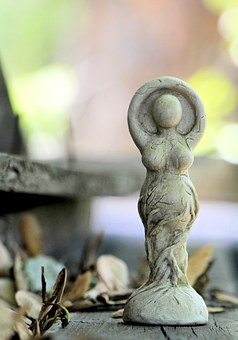ORIGIN Aztec (classical Mesoamerican) [Mexico]. Mother goddess.
KNOWN PERIOD OF WORSHIP circa AD 750 to AD 1500 and probably much earlier.
SYNONYMS Coatlicue-Chimalman (Valley of Mexico).
CENTER(S) OF CULT Tenochtitlan.
ART REFERENCES stone sculptures, murals, codex illustrations.
LITERARY SOURCES pre-Columbian codices.
The creator goddess of the earth and mankind and the female aspect of OMETEOTL. One of the group classed as the TETEOINNAN complex. She has 400 sons, the stars of the southern sky, and is the mother of the goddess COYOLXAUHQUI.
Later, as a widow, she was impregnated by a ball of feathers as she was sweeping the “serpent mountain” of Coatepec near Tula. Her other children decapitated her as punishment for her dishonor, but she gave birth to the sun god HUITZILOPOCHTLI who subsequently slew Coyolxauhqui and her brothers, thus banishing night for day. The Great Temple at Tenochtitlan commemorates this primordial battle.
Coatlicue is known iconographically from a colossal headless statue dated to the late Aztec period, circa AD 1300, which stands in Mexico City. The hands and feet are clawed and the figure bears a necklace of human hands and hearts with a skull pendant. A skirt is formed from snakes and two snakes arising from the neck meet to form a face. Down her back hang thirteen leather cords festooned with snails. According to tradition Coatlicue feeds off human corpses. She is also recognized as the patron deity of florists.

